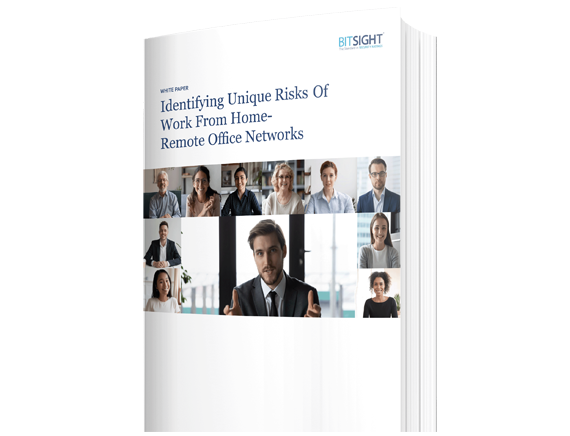Work from home-remote office networks are 7.5x more likely to have at least five distinct families of malware. Learn more about the hidden dangers lurking in residential networks.
How Automation Helps Security Teams Adjust to the Work-from-Home SOC
Tags:

While many companies have succeeded in creating a sustainable remote workforce, this “new normal” environment remains particularly challenging for security operations teams. Accustomed to working in a physical security operations center (SOC), where collaboration and teamwork is key, security teams must find ways to operate efficiently while working from home.
While this disruption has presented a challenge, it also offers an opportunity for security leaders to start rethinking how their infrastructure works. Security managers can use this time to automate traditional security processes and help the SOC shift gears from a reactive, tactical, alert-based methodology towards a proactive, strategic, risk-based approach to security performance management.
Shift gears from tactical to strategic risk reduction
Many security tasks can seem harder to conduct effectively from home, including managing alerts. Prior to the pandemic, security analysts were already inundated with alerts, many of which were proven to be false positives. Now, it’s much harder to cross-check and prioritize alerts with co-workers and senior analysts in the SOC. This leads to an escalation of alerts, delays in time-to-response, a greater consumption of manpower, a higher rate of staff burnout, and new security risks.
Automation is the key to meeting SOC demands remotely. Automating security processes can help managers become more proactive, reduce workloads significantly, and make managing a remote SOC much easier.
Prioritize remediation based on areas of disproportionate risk
Instead of responding to every alert that comes across a screen in the same manner, today’s organizations must leverage data-driven insights to be more strategic in where they focus their risk reduction efforts. Bitsight Security Ratings — which are based on independent, objective, and comparable data — empower teams to better understand their organizations’ security postures so they can prioritize resources based on areas of greatest risk. Through this ratings data, organizations can continuously monitor their IT infrastructures for vulnerabilities such as unpatched systems, misconfigured software, open access ports, and compromised systems. With this detailed view, security managers can better identify the security gaps across their attack surfaces and take swift action to mitigate risks from the comfort of their home offices.
Gain context into higher profile alerts
In addition to communicating an organization’s security posture through a standardized KPI, Bitsight can provide more insights into the inherent risk present across the digital ecosystem — from a centralized platform. Bitsight Attack Surface Analytics, part of Bitsight’s Security Performance Management suite of products, allows an organization to continuously and automatically uncover risk hidden across digital assets in the cloud, and across geographies, business units, and a remote workforce.

When paired with a security rating, the additional context provided by these solutions can eliminate much of the tactical, manual groundwork involved in responding to every alert and sifting through potential threats. Busy security teams can make more informed, comparative decisions about where to focus their cybersecurity efforts, rather than fixing issues as they arise. They can proactively improve their organization’s security posture without having to set foot in a traditional SOC.
Reduce the burden of third-party risk management
Third-party risk management is another process that can be optimized through automation. The security assessments required to onboard third parties can be time consuming and burdensome. But with Bitsight for Third-Party Risk Management, security and risk leaders can gain immediate visibility into cyber risks within a potential vendor’s ecosystem — empowering them to reduce onboarding time and costs, and scale their processes to assess and monitor all of their vendors with current resources. Once the onboarding stage is complete, automated alerts keep security and risk leaders informed if and when a vendor’s security rating drops below a previously agreed-upon threshold.
By analyzing third-party security performance in an automated manner, SOC analysts can focus on more strategic tasks, like threat intelligence, and risk leaders can easily track how a vendor’s security performance changes over time.
Disruption is here to stay
The current pandemic has proven challenging for the “work from home” SOC, but it has also created an opportunity to rethink how security operations function. As the crisis has shown, business disruption can happen at any time and companies must adjust to new ways of working — perhaps indefinitely.
Given this fact, it’s critical that security teams have the tools and insight they need to ensure security performance is maintained, wherever they are located. Taking a strategic, data-driven approach to security performance management — one that centralizes critical security automation, monitoring, and risk-reduction functions through a single pane of glass — can help security managers adjust to the new reality, do more with less, and ensure top talent is protected from burnout.


